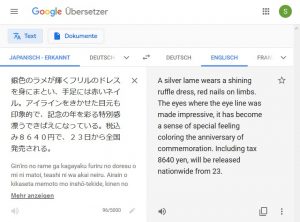

After all, English has gendered pronouns for third person (like she/her and he/him), why not use one when referring to yourself? I personally thought that it was very clever. Another difference that I found interesting was using a different first-person singular pronoun ("I" or "me") according to your gender expression and level of formality. For example, if the object in question is long and narrow (e.g., pencils, eels, or trains) it takes hon (本) suffix and if it is flat (e.g., paper) it takes mai (枚) suffix. For the uninitiated, Japanese numbers take different suffixes and are pronounced differently according to characteristics of the noun they precede. Secondly, there are not any plural forms but over 350 counters, which were the bane of my existence when I was still studying Japanese. First of all, word order is completely different which may take some getting used to. Linguistic differences between Japanese and EnglishĪny English speaker who dabbled in Japanese would probably agree with me on this: Japanese and English could not be more different. I believe this post will help you understand the basics of Japanese translation services with useful tips. We will also touch on the subtleness and context-dependent nature of Japanese speech, and lastly explain some of the possible technical issues in Japanese translation. We will explain common difficulties that translators may face, and discuss linguistic differences between Japanese and English.

In this blog post we are going to focus on Japanese-English translation and discuss the intricacies of the Japanese language. When we add Japan's high GDP, large manufacturing sector and the overall success of the Japanese economy to this equation, we might start wondering whether it would be a good idea to brush up on your Japanese skills and enter a sector related to Japan or Japanese culture. As a lover of Japanese literature who studied Japanese language for three years to little avail, it is safe to say that this trend will continue in the near future. On top of that, sometimes half of Steam's "New & Trending" list seems to be made up of Japanese visual novels. Lots of individuals have started taking Japanese cooking courses, practicing Japanese handcraft techniques such as sashiko or kintsugi and even trying to learn Japanese.


It is common to see many people who used to mainly consume American media pick up the habit of watching anime or reading manga. More and more people seem to realize this. Basically, if you are into gaming, handicraft, cooking or literature and you are not following Japanese media or techniques, you are missing out. This is not without reason: Japan has a very rich culture and a lot to offer to the rest of the world. Interest in Japan and Japanese culture seems to be growing all around the world.


 0 kommentar(er)
0 kommentar(er)
